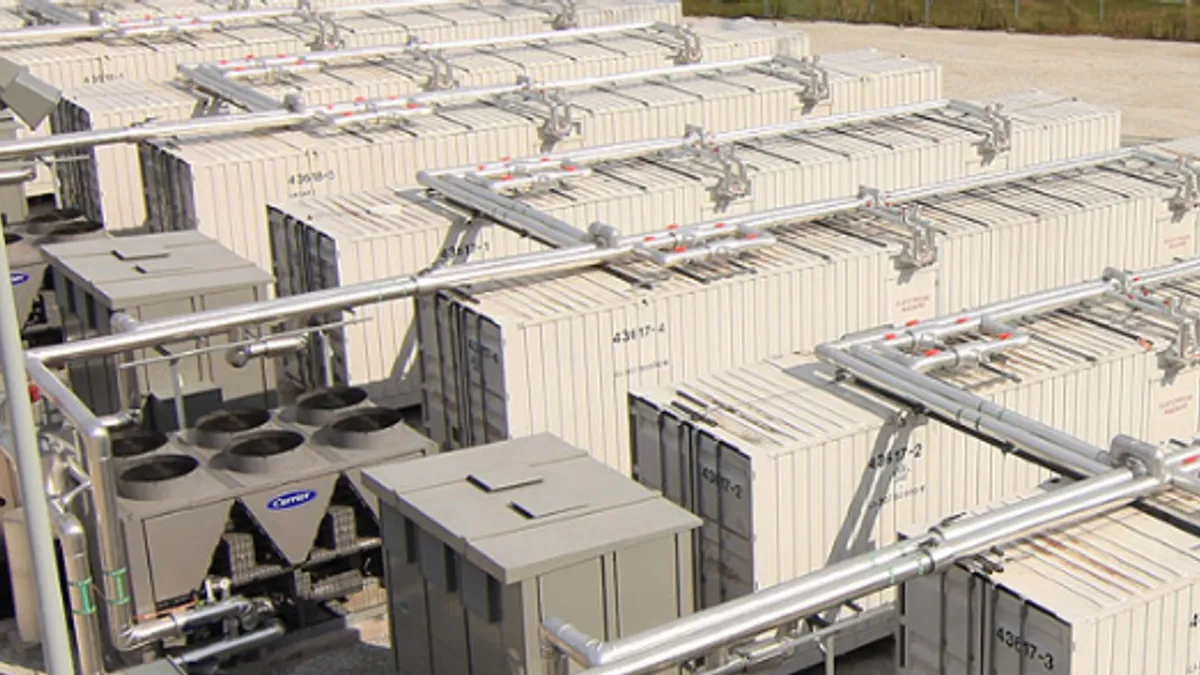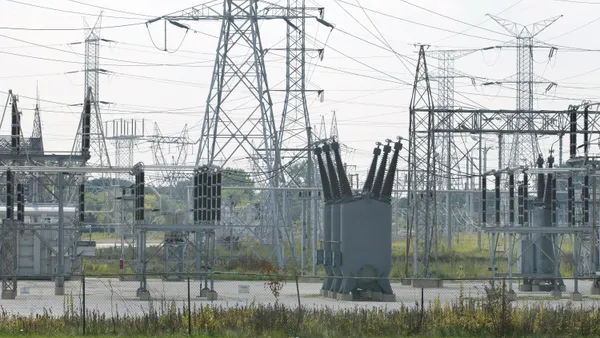Dive Brief:
- Duke Energy will develop a 2 MW storage project to assist in regulating electric grid frequency for PJM Interconnection, the company announced yesterday.
- Duke will partner with LG Chem and Greensmith on the Ohio project, which will be constructed at the site of Duke's retired W.C. Beckjord coal-fired power plant in New Richmond. The site already houses 2 MW of battery capacity, and the additional capacity is expected to come online by the end of the year.
- Storage capaicity for frequency regulation in PJM is growing rapidly. Earlier this month, Invenergy annouced it would bring more than 60 MW of storage online this year, and the frequency response market has a 150 MW pipeline.
Dive Insight:
Duke, the largest electric utility in the country, is continuing to explore energy storage solutions and said it believes it owns almost 15% of the installed, grid-connected storage in the United States. The 2 MW project is aimed at enhancing reliability and grid stability across PJM.
LG Chem will create the project’s integrated operating system, while Greensmith will provide energy storage control and analytics software, and system integration services. A 2-MW power conversion inverter is being provided by Parker Hannifin.
"Fast-responding energy storage is recognized for the tremendous benefits it provides to grid operations, because it can instantaneously absorb excess energy from the grid or release energy," Phil Grigsby, Duke Energy's vice president of commercial transmission, said in a statement. "Delivering that power in seconds, as opposed to a power plant that could take 10 minutes or more to ramp up, is the unique value the battery system provides to grid operators."
Duke already operates one of the largest battery projects in the United States, a 36-MW facility completed in 2012 at the utility’s Notrees Windpower Project in Texas. The storage portion of the project was completed in partnership with the U.S. Department of Energy.
Once completed, the Beckjord project in Ohio will have a total storage capacity of 4 MW.
PJM’s frequency regulation services market was the first offered from an independent system operator to offer significant remuneration for quick-start fast-ramp power from batteries and other load control systems. Payments have averaged $40-$50 per MWh for capacity plus performance since 2012.
With the Duke plans, PJM's frequency response storage pipeline is above 150 MW, and more is to come. Startup Alevo is also planning 200 MW of frequency regulation for PJM and Solar Grid Storage (SGS) — just purchased by SunEdison — is planning another 100 MW.















